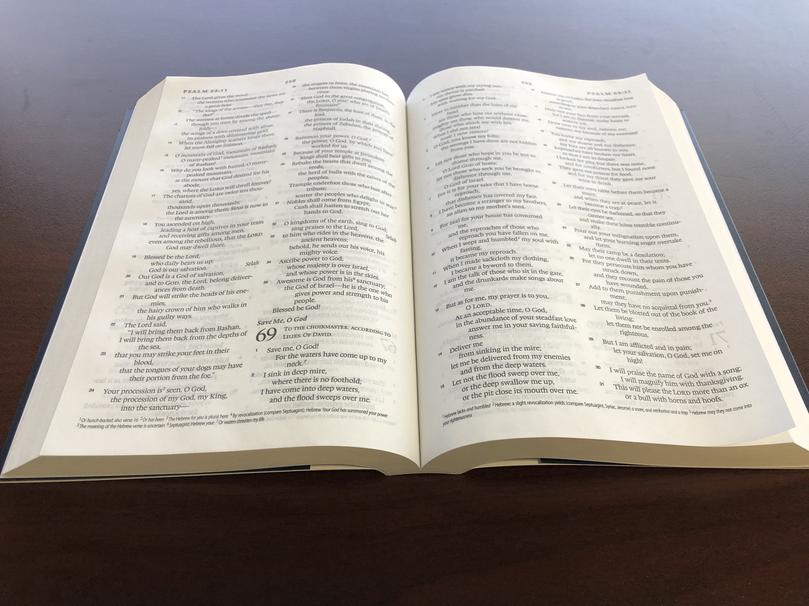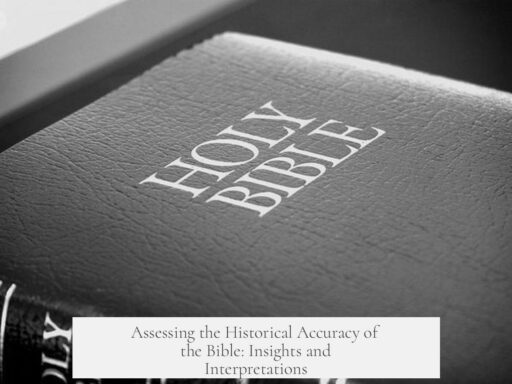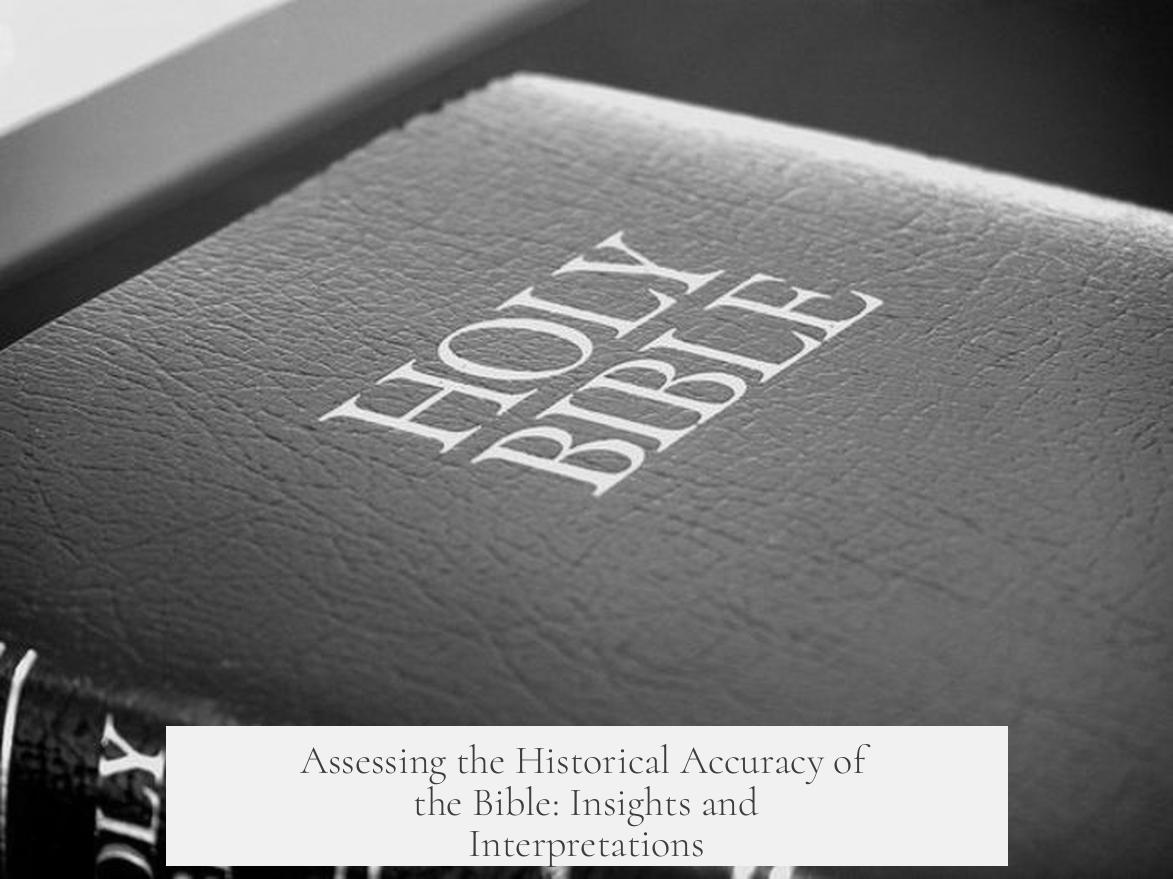The Bible’s historical accuracy varies by section and purpose, reflecting its nature as an ancient collection of texts rather than modern history books. It contains diverse literary genres ranging from poetry and myths to letters and histories. However, the Biblical “histories” differ from contemporary historical writing, which aims for objective facts. Instead, Biblical texts blend real events, cultural rhetoric, theological messages, and oral traditions, crafted for spiritual teaching and community identity rather than strict historical documentation.

The Old Testament (OT) particularly shows these complexities. Many stories were recorded centuries after the supposed events, mixing oral traditions with theological emphasis. For example, the Exodus narrative mentions the “city of Ramses,” though archaeological evidence shows no large enslaved population in Egypt at that specific time. This may reflect an anachronistic detail inserted to connect stories with known places during writing.
The OT often prioritizes theological points over precise historical accuracy. Events are sometimes exaggerated or framed symbolically. For instance, the biblical account of King Hezekiah’s deliverance from Assyrian invasion credits divine intervention killing 180,000 troops. Secular sources, including Assyrian and Egyptian records, offer differing explanations such as military defeat or pestilence without supernatural attribution. This contrast illustrates how biblical authors integrated their faith perspective into recounting events.

Similarly, archaeological evidence affirms some Biblical place names and events, though interpretations vary. Jericho’s walls did fall, yet archaeological consensus suggests natural disasters like earthquakes were key factors, not solely miraculous acts described in scripture. Cultural biases influenced storytelling, as seen in Sodom and Gomorrah’s destruction attributed traditionally to moral failings, while geological studies propose seismic causes. This blending of fact and interpretive narrative illustrates the OT’s role as a religious and moral guide more than a factual chronicle.
The OT’s use of parables and symbolic language also distances it from strict historicity. Stories like Adam and Eve represent archetypal human conditions rather than literal historical figures. Oral traditions and idiomatic expressions shape text meaning. For example, “in the belly of a fish” likely symbolizes despair or isolation rather than a literal swallowing by a creature, reflecting ancient storytelling conventions.

The New Testament (NT) generally offers more historically verifiable details. Its narratives often situate events within well-documented political and social contexts. Luke’s Gospel is widely regarded as historically accurate, naming contemporary rulers such as Pontius Pilate and Tiberius Caesar, allowing cross-verification with Roman records. Archaeological findings, travel in historic Biblical regions, and contemporary writings by Greek and Latin authors confirm many NT contexts and locations.
Comparing the four Gospels reveals differences in style and emphasis, but collectively, they provide a coherent portrayal of early Christian events and beliefs. Early church traditions, centered on Jerusalem and involving Jesus’s family and followers, indicate a community sharing and refining accounts. These details support the NT’s historical grounding while maintaining its strong theological focus.

Yet, both Testaments prioritize spiritual teachings over precise historical recording. Biblical scholars emphasize that the Bible’s primary role is religious and moral instruction, not historical textbook accuracy. Understanding this prevents misinterpreting theological narratives as literal history. Like repair manuals guide fixing machines without teaching ethics, biblical stories aim to convey faith lessons, not exhaustive historical analysis.
Textual analysis further reveals editorial choices shaping Biblical content. Variations between Gospel sayings, such as differing versions of “Blessed are the hungry,” reflect authors’ theological interests and community needs. These differences illuminate how scripture was adapted and interpreted over time for spiritual purposes rather than historical fidelity.

Archaeology sometimes affirms Biblical details long disputed. For example, the book of Daniel mentions King Belshazzar, once doubted by scholars, but archaeological discoveries confirmed his historical existence and role. Linguistic evidence connects Biblical place names with ancient languages, supporting consistency in geographic references despite minor spelling variations.
In summary:

- The Bible is a complex anthology blending history, theology, poetry, and myth.
- Old Testament stories often post-date their events and emphasize theological messages over strict historical facts.
- New Testament accounts align more closely with verified historical contexts and leaders.
- Interpretations of Biblical events must consider ancient literary genres and oral traditions.
- Archaeological findings support some Biblical details but also challenge oversimplified readings.
- The Bible’s primary purpose is spiritual teaching, not comprehensive historical reportage.
How Historically Accurate Is the Bible?
The Bible’s historical accuracy is a complex topic with nuances that challenge simple answers. It is neither a straightforward history book nor a mere mythology. Instead, it is a collection of ancient texts mixing theology, culture, and varying narrative styles that reflect the understanding and literary conventions of their time.

Let’s embark on a fascinating journey to unravel the layers of history, tradition, and interpretation woven into the Bible. And, yes, we’ll balance facts with a sprinkle of curiosity and a pinch of humor.
The Bible: More Than Just History
First things first, the Bible is not a single book, but a library of texts written across centuries in diverse genres. It contains poems, myths, sermons, letters, and “histories.” However, these “histories” are not quite what modern readers expect from a history book.
In ancient times, history writing included storytelling, myth, and commentary all in one pot. Take Herodotus, the Greek “father of history.” His works blend serious accounts with jokes and myths, much like the biblical texts do. The writers weren’t liars; they wrote within the literary traditions of their era.
Even today, historians add their biases and choose which facts to highlight. So, expecting the Bible to read like a modern textbook is missing the point. Instead, ask: Who wrote these texts? Why? What do they reveal about their world and worldview?
The Old Testament: Echoes from a Distance
The Old Testament (OT) especially reveals a fascinating challenge: its stories often come from oral traditions passed down for centuries before being written. This creates a time gap between the events and their recording.
For example, the Exodus story mentions the city of Ramses. Yet, archaeological evidence suggests no large slave population in Egypt during Ramses’ era. Scholars explain this by noting the text was written decades after the supposed events. The reference could be to a city located where Ramses once stood during the later author’s time.
The OT prioritizes theological messages over precise historical details. Consider the story of King Hezekiah and the invasion of Sennacherib. The Bible claims an angel killed 180,000 troops, while Assyrian records say nothing. Egyptian inscriptions tell of rats destroying weapons and the army killing fleeing Assyrians. The underlying lesson? God’s protection of His people.
Names and places in the OT generally align with historical reality, though editorial revisions often shape the narratives. This editorial influence resembles how modern storytellers might dramatize news to fit their perspective.
Take the tales of Jericho’s walls falling or Sodom and Gomorrah’s destruction. Jericho did exist, and its walls fell—just probably not because someone blew on a ram’s horn. Sodom and Gomorrah might have perished due to seismic activity, not divine punishment for “sins” as often taught. Yet these theological interpretations tell us more about the storytellers’ culture than literal events.
Many OT stories serve as parables or moral guides, simplified for easy understanding. Adam and Eve represent humanity rather than two individuals. The cosmic timeline isn’t a literal 144-hour creation but a narrative tool. Even modern scientists like Neil deGrasse Tyson use metaphors and analogies to make complex ideas digestible.
Another twist comes from slang and oral traditions embedded in the Bible. Expressions like “in the belly of the fish” may mean feeling deeply depressed, much like today’s phrase “down in the mouth.” Ancient writers penned these phrases without fully grasping their later meanings.
The New Testament: More Historically Verifiable
The New Testament (NT) offers better opportunities for historical verification. For example, Luke’s Gospel names rulers and governors, such as Pontius Pilate and Herod, consistent with known historical timelines: “In the fifteenth year of the reign of Tiberius Caesar…” (Luke 3:1).
These specific references make parts of the NT easier to corroborate with external sources, including Greek and Latin authors like Tertullian and Ignatius. Traveling today to Israel, Turkey, Greece, or Italy reveals well-established traditions about places and people mentioned in the NT. John’s influence on Ephesus and Paul’s missionary journeys are more than just faith stories; they are rooted in historical contexts.
Comparing the four Gospels shows both overlaps and differences, indicating independent perspectives rather than coordinated storytelling. Early church accounts suggest the original followers of Jesus did not immediately believe the resurrection, showing internal debate rather than unanimous myth-making.
Spiritual Lessons Trump Historical Precision
At the heart of the Bible is a deeper spiritual purpose. While historical facts matter, their primary role often supports religious teachings. Think of the Bible like a spiritual manual rather than a history textbook.
Just as a car repair manual isn’t meant to teach you ethics, biblical stories aren’t designed to deliver precise history but powerful moral and theological lessons. This focus can explain why some stories mix legend and fact—they work as faith guides, not pure chronicles.
Textual Concordance: A Closer Look at Interpretation
Consider variations in the Gospels, like Jesus’ “blessed…” sayings. Luke writes, “Blessed are the hungry,” while Matthew says, “Blessed are those who hunger and thirst for righteousness.” Who’s right? By analyzing how often each Gospel uses “righteousness” (Matthew 13 times, Luke 4 times, John 4 times, Mark never), many scholars lean toward Matthew as emphasizing the concept more strongly, possibly reflecting theological emphasis rather than historical exactness.
Archaeological Hits and Misses
Archaeology sometimes surprises us by confirming biblical claims once doubted. Take King Belshazzar, mentioned in Daniel. Secular histories doubted his kingship, but archaeological discoveries later verified he held a ruling position—vindicating the biblical text.
Place names offer similar confirmations. The Bible’s “Mizraim” as a name for Egypt aligns with modern Arabic and Punjabi uses like “Misr.” Such linguistic connections reinforce the Bible’s historical roots amid shifting spellings over time.
So, How Historically Accurate Is the Bible?
The Bible is historically accurate, but not in the way modern readers usually expect. It mixes history, theology, tradition, and literary style unique to its time. Many people miss this, expecting a literal, fact-by-fact history, which leads to confusion or skepticism.
Understanding the Bible means appreciating its context: ancient storytelling and spiritual teaching fused together. Its authors lived in turbulent times, often hundreds of years removed from events they described. They narrated history not merely to record facts but to strengthen faith, shape identity, or teach moral values.
Archaeological finds, linguistic studies, and external historical records often confirm biblical details. Still, the Bible’s true strength lies in how it communicates enduring lessons through its stories.
Final Thoughts: Embrace the Bible’s Layers
When reading the Bible, try to appreciate it as a literary and historical tapestry. Don’t ask, “Is every detail 100% historically accurate?” but rather, “What does this text reveal about its people, beliefs, and times?”
Approach the Bible with curiosity about its ancient authors and the traditions they inherited. Think about why they told stories in certain ways, what truths those stories conveyed, and how they influence today’s faith and culture.
And remember, just like modern news, history always comes with a bit of spin. The Bible’s narratives, legends, and facts together offer a remarkable glimpse into the ancient world—both its challenges and its hopes.
Curious to explore further? Take a walk through those ancient lands, compare gospel stories, and watch archaeology reshape our understanding. The Bible remains one of history’s most enduring and intriguing books—both a spiritual guide and a fascinating historical puzzle.




